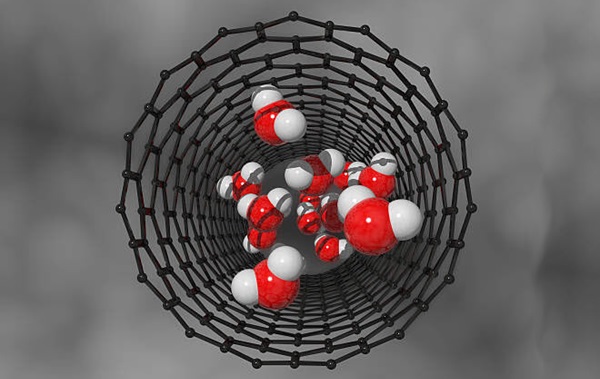Optimizing Consensus in Blockchain with Deep and Reinforcement Learning
Downloads
This study aims to optimize blockchain consensus mechanisms by integrating artificial intelligence techniques to address critical limitations in latency, scalability, computational efficiency, and security inherent in traditional protocols, such as PoW, PoS, and PBFT. The proposed model combines deep neural networks (DNNs) for feature extraction with deep reinforcement learning (DRL), specifically Deep Q-Networks (DQN) and Proximal Policy Optimization (PPO), to enable dynamic validator selection and real-time adjustment of consensus difficulty. The training process utilizes a hybrid dataset of historical blockchain records from Ethereum and Hyperledger networks and synthetic data from simulated attack scenarios involving Sybil, 51%, and DoS threats. Experimental evaluations were conducted in private and permitted environments under varying transactional loads. Results show a 60% reduction in confirmation latency compared to PoW, achieving 320 ms, and a 20% improvement over PBFT. Transaction throughput increased to 22,000 transactions per second (TPS), and computational resource consumption was reduced by 30%. The model achieved an attack tolerance of up to 92%, significantly enhancing network resilience. The novelty of this work lies in its autonomous consensus optimization strategy, which enables adaptive and secure protocol behaviour without manual intervention, representing a scalable and efficient solution for future blockchain infrastructures.
Downloads
[1] Ragab, M., & Altalbe, A. (2022). A Blockchain-Based Architecture for Enabling Cybersecurity in the Internet-of-Critical Infrastructures. Computers, Materials and Continua, 72(1), 1579–1592. doi:10.32604/cmc.2022.025828.
[2] Malakhov, I., Marin, A., & Rossi, S. (2023). Analysis of the confirmation time in proof-of-work blockchains. Future Generation Computer Systems, 147, 275–291. doi:10.1016/j.future.2023.04.016.
[3] Naz, S., & Lee, S. U. J. (2024). Sea Shield: A Blockchain Technology Consensus to Improve Proof-of-Stake-Based Consensus Blockchain Safety. Mathematics, 12(6). doi:10.3390/math12060833.
[4] Li, C., Qiu, W., Li, X., Liu, C., & Zheng, Z. (2024). A Dynamic Adaptive Framework for Practical Byzantine Fault Tolerance Consensus Protocol in the Internet of Things. IEEE Transactions on Computers, 73(7), 1669–1682. doi:10.1109/TC.2024.3377921.
[5] Feng, X., Ma, J., Miao, Y., Liu, X., & Choo, K. K. R. (2023). Regulatable and Hardware-Based Proof of Stake to Approach Nothing at Stake and Long Range Attacks. IEEE Transactions on Services Computing, 16(3), 2114–2125. doi:10.1109/TSC.2022.3201568.
[6] Yang, Z., Shi, Y., Zhou, Y., Wang, Z., & Yang, K. (2023). Trustworthy Federated Learning via Blockchain. IEEE Internet of Things Journal, 10(1), 92–109. doi:10.1109/JIOT.2022.3201117.
[7] Emil Selvan, G. S. R., Daniya, T., Ananth, J. P., & Suresh Kumar, K. (2024). Network Intrusion Detection and Mitigation Using Hybrid Optimization Integrated Deep Q Network. Cybernetics and Systems, 55(1), 107–123. doi:10.1080/01969722.2022.2088450.
[8] Aitchison, M., & Sweetser, P. (2022). DNA: Proximal policy optimization with a dual network architecture. 36th Conference on Neural Information Processing Systems (NeurIPS 2022), 28 November - 9 December, 2022, New Orleans, United States.
[9] Yu, J., Ge, L., & Wu, M. (2024). Proposal Distribution optimization for Endorsement Strategy in Hyperledger Fabric. Journal of Supercomputing, 80(10), 15038–15065. doi:10.1007/s11227-024-06056-2.
[10] Khan, N., Kchouri, B., Yatoo, N. A., Kräussl, Z., Patel, A., & State, R. (2022). Tokenization of sukuk: Ethereum case study. Global Finance Journal, 51. doi:10.1016/j.gfj.2020.100539.
[11] Oh, B., & Lee, D. (2023). Cooperative P2P Transaction Framework Between DSO and PMO Based on Consensus ADMM Against Path-Sharing Distribution Network Congestion. Journal of Electrical Engineering and Technology, 18(3), 1469–1479. doi:10.1007/s42835-023-01419-w.
[12] Taher, S. S. H., Ameen, S. Y., & Ahmed, J. A. (2024). Enhancing blockchain scalability with snake optimization algorithm: a novel approach. Frontiers in Blockchain, 7. doi:10.3389/fbloc.2024.1361659.
[13] Nourmohammadi, R., & Zhang, K. (2022). An On-Chain Governance Model Based on Particle Swarm Optimization for Reducing Blockchain Forks. IEEE Access, 10, 118965–118980. doi:10.1109/ACCESS.2022.3221419.
[14] Paidipati, K. K., Kurangi, C., Uthayakumar, J., Padmanayaki, S., Pradeepa, D., & Nithinsha, S. (2024). Ensemble of deep reinforcement learning with optimization model for DDoS attack detection and classification in cloud based software defined networks. Multimedia Tools and Applications, 83(11), 32367–32385. doi:10.1007/s11042-023-16894-6.
[15] Gupta, K. D., Rahman, A., Poudyal, S., Huda, M. N., & Mahmud, M. A. P. (2019). A Hybrid POW-POS Implementation Against 51 percent Attack in Cryptocurrency System. 2019 IEEE International Conference on Cloud Computing Technology and Science (CloudCom), 396–403. doi:10.1109/cloudcom.2019.00068.
[16] Sharma, P., Jindal, R., & Borah, M. D. (2024). Blockchain-based distributed application for multimedia system using Hyperledger Fabric. Multimedia Tools and Applications, 83(1), 2473–2499. doi:10.1007/s11042-023-15690-6.
[17] Dang, P., & Gupta, H. (2024). Security Challenges and Applications for Digital Transactions Using Blockchain Technology. Lecture Notes in Electrical Engineering, 1116, 487–498. doi:10.1007/978-981-99-8646-0_38.
[18] Al-Sumaidaee, G., Alkhudary, R., Zilic, Z., & Swidan, A. (2023). Performance analysis of a private blockchain network built on Hyperledger Fabric for healthcare. Information Processing & Management, 60(2), 103160. doi:10.1016/j.ipm.2022.103160.
[19] Jose, J., & Jose, D. V. (2023). Deep learning algorithms for intrusion detection systems in internet of things using CIC-IDS 2017 dataset. International Journal of Electrical and Computer Engineering, 13(1), 1134–1141. doi:10.11591/ijece.v13i1.pp1134-1141.
[20] Muthulakshmi, S., & Chitra, R. (2024). Interplanetary file system and blockchain for secured smart grid networks. Journal of Supercomputing, 80(5), 5900–5922. doi:10.1007/s11227-023-05680-8.
[21] Jagadeeswari, N., Mohanraj, V., Suresh, Y., & Senthilkumar, J. (2023). Optimization of virtual machines performance using fuzzy hashing and genetic algorithm-based memory deduplication of static pages. Automatika, 64(4), 868–877. doi:10.1080/00051144.2023.2223479.
[22] Suseno, T. R. D., Afrianto, I., & Atin, S. (2024). Strengthening data integrity in academic document recording with blockchain and InterPlanetary file system. International Journal of Electrical and Computer Engineering, 14(2), 1759–1769. doi:10.11591/ijece.v14i2.pp1759-1769.
[23] Liu, A., Chen, J., He, K., Du, R., Xu, J., Wu, C., Feng, Y., Li, T., & Ma, J. (2025). DynaShard: Secure and Adaptive Blockchain Sharding Protocol With Hybrid Consensus and Dynamic Shard Management. IEEE Internet of Things Journal, 12(5), 5462–5475. doi:10.1109/JIOT.2024.3490036.
[24] Muhammad, A., Shamshad, F., & Bae, S. H. (2023). Adversarial Attacks and Batch Normalization: A Batch Statistics Perspective. IEEE Access, 11, 96449–96459. doi:10.1109/ACCESS.2023.3250661.
[25] Adiban, M., Siniscalchi, S. M., & Salvi, G. (2023). A step-by-step training method for multi generator GANs with application to anomaly detection and cybersecurity. Neurocomputing, 537, 296–308. doi:10.1016/j.neucom.2023.03.056.
[26] Jiang, W., Wu, X., Song, M., Qin, J., & Jia, Z. (2023). A Scalable Byzantine Fault Tolerance Algorithm Based on a Tree Topology Network. IEEE Access, 11, 33509–33519. doi:10.1109/ACCESS.2023.3264011.
[27] Gurupriya, M., Dharshan, J. Y., Rohit, K. C., & Sridhar, S. K. (2025). Efficient Determent of Sybil Attacks in Blockchain. Proceedings of the International Conference on Multi-Agent Systems for Collaborative Intelligence, ICMSCI 2025, 2025, 268–272. doi:10.1109/ICMSCI62561.2025.10894178.
[28] Venkatesan, K., & Rahayu, S. B. (2024). Blockchain security enhancement: an approach towards hybrid consensus algorithms and machine learning techniques. Scientific Reports, 14(1). doi:10.1038/s41598-024-51578-7.
[29] Al-Marridi, A. Z., Mohamed, A., & Erbad, A. (2024). Optimized blockchain-based healthcare framework empowered by mixed multi-agent reinforcement learning. Journal of Network and Computer Applications, 224. doi:10.1016/j.jnca.2024.103834.
[30] Akrasi-Mensah, N. K., Agbemenu, A. S., Nunoo-Mensah, H., Tchao, E. T., Ahmed, A. R., Keelson, E., Sikora, A., Welte, D., & Kponyo, J. J. (2023). Adaptive Storage Optimization Scheme for Blockchain-IIoT Applications Using Deep Reinforcement Learning. IEEE Access, 11, 1372–1385. doi:10.1109/ACCESS.2022.3233474.
[31] Ipchi Sheshgelani, M., Pashazadeh, S., & Salehpoor, P. (2023). Cooperative hybrid consensus with function optimization for blockchain. Cluster Computing, 26(6), 3565–3576. doi:10.1007/s10586-022-03746-5.
- This work (including HTML and PDF Files) is licensed under a Creative Commons Attribution 4.0 International License.



















